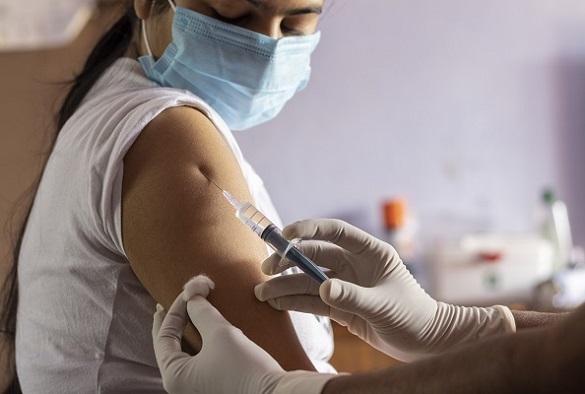Long-acting injectable for HIV prevention 'overpriced'

While the long-acting injectable Apretude was more effective at reducing the incidence of HIV than oral emtricitabine-tenofovir disoproxil fumarate, researchers said it does not justify the higher costs associated with it. The cost-effectiveness analysis of Apretude (cabotegravir; ViiV Healthcare) was recently published in Annals of Internal Medicine.
“Unless cabotegravir (CAB-LA) is priced to reflect its value above newly available generic pills, the people who need it most may be left behind,” Anne Neilan, MD, MPH, an infectious disease physician at Massachusetts General Hospital and an assistant professor at Harvard Medical School, told Healio.
She added that the actual cost of the long-acting pre-exposure prophylaxis (PrEP) regimen — which is likely easier for patients to adhere to than daily pills — is three times higher than the estimated willingness-to-pay threshold.
“In the U.S., CAB-LA would have the highest value and greatest utility in settings and for individuals for whom using oral PrEP as prescribed is challenging or impossible, many of whom are vulnerable adults,” Neilan said. “However, given our study results, it is still overpriced even in that population.”
For the study, Neilan and colleagues calculated 10-year clinical outcomes associated with CAB-LA and oral tenofovir-based PrEP and projected their clinical benefits among patients at high risk for HIV.
The study cohort included 476,700 men who have sex with men (MSM) and transgender women without HIV but at very high risk. Their mean age at baseline was 30.1 years.
The researchers adopted the Cost-Effectiveness of Preventing AIDS Complications model, which is a microsimulation of HIV prevention and treatment that projects HIV outcomes in monthly cycles. They considered costs associated with the drugs themselves, office visits, laboratory monitoring, testing and additional costs associated with the medications.
Neilan and colleagues estimated HIV incidence and willingness-to-pay thresholds by quality-adjusted life-years (QALYs) with four lines of treatment: no PrEP, generic emtricitabine-tenofovir disoproxil fumarate (F/TDF), branded Descovy (emtricitabine-tenofovir alafenamide; F/TAF; Gilead Sciences) and CAB-LA.
Incidence of HIV
Overall, the amount of total primary HIV transmissions was highest with no PrEP (n= 178,000), lower for generic F/TDF and branded F/TAF (n = 122,000) and lowest for CAB-LA (n = 107,000), according to the researchers. Due to the greatest reductions in estimated HIV infections and primary transmissions, CAB-LA was associated with the highest QALYs. Also, branded F/TAF was associated with slightly higher QALYs than generic F/TDF. Neilan and colleagues attributed this to the bone and renal toxicity risks linked with F/TDF. The greater reduction in HIV transmission with CAB-LA “was thought to be due to avoiding the need to take a daily oral pill,” they wrote.
Estimated annual costs
Costs over 10 years associated with no PrEP totaled an estimated $33.48 billion “in 2020 dollars,” the researchers reported. Meanwhile, estimated costs totaled $30.67 billion for generic F/TDF, $60.42 billion for branded F/TAF and $75.84 billion for CAB-LA (with the upper bound price).
Estimated annual PrEP drug costs (generic F/TDF = $150.03 million; branded F/TAF = $7.38 billion; CAB-LA = $11.15 billion) exceeded antiretroviral therapy costs ($85.65 million) during the first year of treatment. However, by year 10, Neilan and colleagues reported that ART costs ($4.09 billion) exceeded PrEP costs in all four treatment pathways (generic F/TDF= $17.57 million; branded F/TAF = $862.24 million; CAB-LA = $1.44 billion). Annual costs followed a similar pattern when primary transmissions were excluded, according to the researchers.
With a range of cost-effective willingness-to-pay thresholds of $50,000 per QALY to $300,000 per QALY, CAB-LA “would only provide good value for money” for those at very high risk for HIV if its annual price was less than $6,600 higher than generic oral PrEP, the researchers wrote.
“This pricing is substantially less than branded F/TDF or F/TAF options and also less than half the current CAB-LA [plus long-acting rilpivirine] pricing for HIV treatment,” Neilan and colleagues wrote.
If CAB-LA were priced to be cost-saving compared with generic F/TDF, the researchers estimated that the maximum price premium of CAB-LA would be less than $800 to $2,100 per year. However, as efficacy and retention of CAB-LA improved compared with generic F/TDF, the maximum price premium would increase, according to multiway sensitivity analyses by the researchers.
Cost barrier to PrEP
Despite evidence supporting the efficacy of PrEP, uptake in the U.S. has been “slow and unequal,” Neilan and colleagues wrote. Only 6% of eligible Black populations and 11% of eligible Latinx populations use PrEP compared with 42% of eligible white populations. Cost of PrEP is a barrier, they added.
“As a clinician, I value offering choices to my patients,” Neilan said. “If a patient can take pills regularly, it’s not clear injectable PrEP offers benefits. For patients who can’t take pills, CAB-LA could be an excellent option clinically, but is more costly than our analysis found it should be.”
She added that “clinicians are tremendous advocates for ensuring that our limited health care dollars are spent wisely and in ways that improve disparities for the most vulnerable.”
‘Foundation’ for future research
In a related editorial, David R. Holtgrave, PhD, the dean of the school of public health at the University at Albany, State University of New York, and Ronald O. Valdiserri, MD, MPH, a professor in the department of epidemiology in the Rollins School of Public Health at Emory University, described the key points from the analysis.
“Their finding that CAB-LA would need to be priced in a range much closer to generic F/TDF is important because it suggests that if pricing is not in this range, reliance on daily oral PrEP may well remain the de facto option for HIV PrEP,” they wrote.
The analysis provides a “foundation” for better understanding the “nuanced mixed uses of generic F/TDF and CAB-LA,” Holtgrave and Valdiserri added.
References:
Holtgrave DR, Valdiserri RO. Ann Intern Med. 2022;doi:10.7326/M22-0057.
Neilan AM, et al. Ann Intern Med. 2022;doi:10.7326/M21-1548.